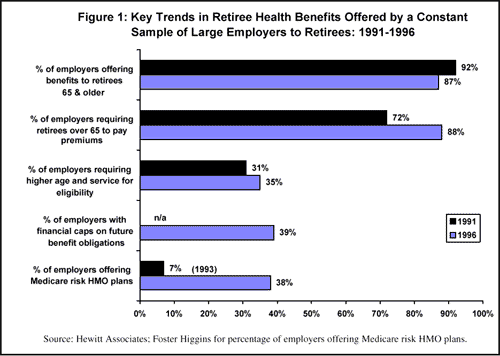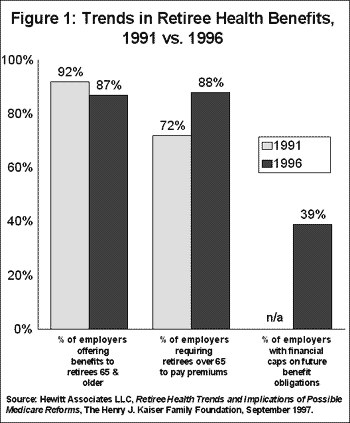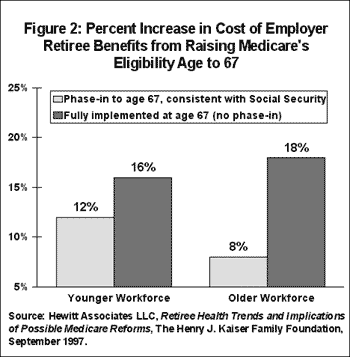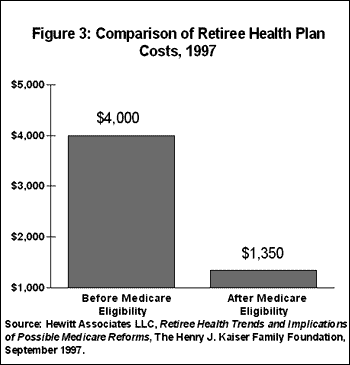A Comparison of the Medicaid Provisions in the House and Senate Versions of the Balanced Budget Act of 1997 (H.R. 2015/S. 947) with Current Law
Prepared by Sara Rosenbaum, Julie Darnell, Center for Health Policy Research, The George Washington University Medical Center for the Kaiser Commission on the Future of Medicaid
July 1997
Table Of ContentsIntroduction iii A. Overview 1 B. Eligibility 2 1. General approach to eligibility 2 2. Poverty-level children 2 3. Disabled children 2 4. Continuous coverage of children 3 5. Presumptive eligibility of children 3 6. Legal immigrants 4 7. Undocumented aliens 4 8. Low-income Medicare beneficiaries 5 9. Disabled workers 5 10. Women with diagnosed breast cancer 6 C. Benefits 7 1. General approach to benefits 7 2. Early and Periodic Screening Diagnosis and Treatment (EPSDT) 7 3. Primary care case management services 7 4. Physician assistant services 8 5. Community-based mental health services 8 6. Home and community based care 8 7. Long-term care services 9 D. Premiums And Cost Sharing 10 1. General approach to premiums and cost sharing 10 2. HMO copayments 10 3. Cost sharing for qualified Medicare beneficiaries 10 4. Payment of Medicare premiums for specified low-income Medicare beneficiaries 11 5. Private health insurance premiums 11 E. Provider Reimbursement 12 1. General approach to provider reimbursement 12 2. Hospitals 12 3. Disproportionate share hospitals 13 4. Nursing facilities 14 5. Managed care entities 14 6. Federally qualified health centers and rural health clinics 14 7. Obstetrical and pediatric providers 14 F. Managed Care 15 1. General approach to managed care 15 2. Mandatory enrollment as a condition of coverage 16 3. Enrollment composition of Medicaid-qualified managed care organizations 16 4. Default enrollment 16 5. Guaranteed enrollment 17 6. Disenrollment 17 7. Conditions of participation for managed care entities 18 8. Prior approval of contracts with managed care organizations 19 9. Provider Plan protections 19 10. Payment of DSH hospitals 19 11. Quality assurance 19 12. Enrollment of Native Americans 19 13. Treatment of family planning services 20 H. State Administration Requirements 20 1. Privatization 20 2. Continuation of waivers 20 I. Federal Financial Assistance 21 1. Disproportionate share payments 21 2. Federal Medicaid assistance percentage (FMAP) 21 3. Federal financial assistance for care of aliens 21 Introduction
The following table compares current Medicaid law with the Medicaid provisions contained in the FY 1998 budget reconciliationmeasures (H.R. 2015, S. 947, The Balanced Budget Act of 1997) passed by the House and Senate on June 25, 1997.1 A House/SenateConference Committee has begun work on the key differences between the two measures. Most observers assume that the Conference willmove rapidly and will also entail negotiations with the White House in order to resolve remaining differences prior to the time that the ConferenceAgreement is finally approved by both Houses and sent to the President. When finally enacted into law, the legislation will make significantchanges in numerous federal health and welfare programs, including Medicaid.
While the House and Senate Medicaid provisions are highly similar, they contain certain notable differences that must be resolved. Bothmeasures would retain Medicaid as an individual entitlement with no caps to federal contributions to state Medicaid programs.2 Both bills wouldlimit federal contributions to states’ Disproportionate Share Hospital Payment (DSH) programs, with certain minimum DSH spending requirementsimposed on state agencies in the case of the Senate bill. Both measures would make numerous changes in federal requirements related toeligibility of non-citizens, benefits, the use of mandatory managed care arrangements, provider reimbursement, long-term care benefits, andstate administration. The Senate measure contains more provisions than the House in the area of state administration requirements for managedcare and on conditions of participation for managed care entities. The Senate bill also extends certain payment and participation protections tomanaged care entities that are not contained in the House bill.A. Overview Issue Current Law House (H.R. 2015) Senate (S. 947) 1. Summary Medicaid entitles individuals who meet eligibility conditions to coverage for a range of required and optional acute and long-term care services.
States are entitled to a federal contribution toward the cost of their programs calculated in accordance with a statutory formula.
Additional payments made to states for disproportionate share hospital (DSH) programs.
Certain providers, including hospitals, nursing homes, home health agencies, federally qualified health centers (FQHC), and rural health clinics (RHC) are entitled to reimbursements in accordance with certain rules.
Providers serving Medicare beneficiaries who also have Medicaid are entitled to the Medicare payment rate.
Copayments for Medicaid beneficiaries permitted only under limited circumstances.
States may offer managed care enrollment on a voluntary basis. Mandatory managed care enrollment requires states to obtain a waiver of the freedom of choice provisions (Section 1915(b) or Section 1115).
States may use private contractors to administer Medicaid programs but not to determine eligibility.
Prohibits medical assistance beyond emergency coverage to undocumented aliens. Retains Medicaid as an individual entitlement with a continued state entitlement to federal financing without a cap.
No change to current law.
Reduces federal contributions for state DSH programs.
Repeals Boren Amendment payment requirements for hospitals, nursing facilities and home health agencies.
Revised payment rules for FQHCs and RHCs.
No change to current law.
Expands state options to require cost sharing.
Permits states to mandate managed care enrollment for all Medicaid beneficiaries except special needs children.
Permits states to use private contractors to determine eligibility.
Includes new funding for states with high numbers of undocumented aliens. Retains Medicaid as an individual entitlement with a continued state entitlement to federal financing without a cap.
No change to current law.
Similar provision, but requires targeting of DSH hospitals.
Similar provision.
No change to current law.
Permits states to pay Medicaid rates for Medicare beneficiaries.
Similar provisions.
Permits states to mandate managed care enrollment for all Medicaid beneficiaries except special needs children and Medicare beneficiaries.
No similar provision.
No similar provision. B. Eligibility Issue Current Law House (H.R. 2015) Senate (S. 947) 1. General approach to eligibility Conditions coverage on numerous financial and categorical conditions of eligibility.
Individuals who meet eligibility requirements are entitled to coverage for medical assistance items and services covered under a State’s Medicaid plan when furnished by participating providers. Retains the entitlement to coverage among eligible individuals.
Permits states to condition coverage for all beneficiaries on mandatory enrollment in a managed care entity. Exempts special needs children (those who receive SSI or are institutionalized) from mandatory managed care enrollment. Retains the entitlement to coverage among eligible individuals.
Permits states to condition coverage for all beneficiaries on mandatory enrollment in a managed care entity. Exempts from the mandatory enrollment requirements special needs children and Medicare beneficiaries. 2. Poverty-level children Mandates coverage of all children up to age 19 who meet financial conditions of eligibility and who were born after September 20, 1983, thereby phasing in coverage for children under 19 to the year 2002.
States can expand coverage to children under poverty under 1902(r)(2) or Section 1115 waivers. Clarifies state option to immediately extend coverage to all children under age 19. Similar to House provisions. 3. Disabled children Children who are disabled and receive SSI automatically receive Medicaid in nearly all states. Disability criteria for children restricted under 1996 welfare reform legislation to remove functionally disabled children and to tighten criteria for mental illness-related disability. Approximately 150,000 children are expected to be removed from SSI; CBO estimates that most will requalify for Medicaid as poverty-level children. Authorizes states to provide Medicaid to all children who lose SSI as a result of welfare reform and who do not otherwise qualify for Medicaid. No change to current law. 4. Continuous coverage of children Terminates eligibility for children who no longer meet conditions of eligibility. Permits states to guarantee 12 months of eligibility following a determination of eligibility up to an age specified by the state, but not exceeding 19 years of age. Contains similar provision. 5. Presumptive eligibility for children Provides states with the option to extend a period of presumptive (i.e., temporary) eligibility for prenatal care in the case of pregnant women who have applied for Medicaid and who, based on preliminary information, appear to be eligible for coverage. Adds a presumptive eligibility option for children under age 19 and identifies as potentially qualified to make presumptive eligibility determinations the following: Head start agencies, child care providers and WIC programs. Federal expenditures attributable to services provided during presumptive eligibility period would be deducted from the amounts available to the states under the Child Health Block Grant. No change to current law. 6. Legal Immigrants Authorizes, but does not require states to extend coverage to most qualified aliens (i.e., non-citizens who are legal U.S. residents) who are otherwise eligible for Medicaid and resided in the U.S. prior to August 22, 1996.
Optional Medicaid coverage groups include legally resident SSI recipients who received SSI benefits on August 22, 1996, but will lose assistance as non-citizens. As of Spring 1997, seven states had elected not to extend Medicaid to some or all former SSI recipients who were qualified aliens.
Imposes 5-year time limit on Medicaid coverage for emergency care only for otherwise eligible qualified aliens who enter the U.S. on or after August 22, 1996. Restores SSI and Medicaid benefits to all qualified aliens who received SSI and Medicaid as of August 22, 1996.
Extends from 5 to 7 years the time period for which refugees who are eligible for SSI may receive assistance, thereby increasing the period of mandatory Medicaid coverage for emergency care.
Adds Cuban and Haitian entrants to the group of legal immigrants covered by the exemptions for refugees.
Exempts legal immigrants who are members of an Indian tribe from the restrictions on SSI and Medicaid eligibility. Restores SSI and Medicaid benefits to all qualified aliens who received SSI and Medicaid as of August 22, 1996. Extends coverage to qualified aliens were in the country and who subsequently become disabled and eligible for SSI but were not receiving SSI as of August 22, 1996.
Exempts from the restriction on SSI benefits persons found eligible after July 1996, on the basis of very old applications, as well as SSI recipients who were too disabled to meet the conditions of naturalization by the September 1997, deadline.
Similar to House Provision and eliminates 5 year ban on full Medicaid eligibility in the case of qualified aliens who are children under age 19.
Similar to House Provision and adds Amerasians.
Similar to House Provision. 7. Undocumented aliens Prohibits medical assistance beyond emergency coverage to undocumented aliens. Authorizes a new entitlement-based state grant program of $100 million ($20 million per year) for FY 1998 through FY 2002 for emergency services to each of the 12 States with the highest number of undocumented aliens, with each state’s allotment ratio equal to the same percentage as the number of undocumented aliens in the state bears to the nation, based on estimates prepared by INS. No similar Senate provision. 8. Low-income Medicare beneficiaries Requires states to pay for the premiums, deductibles and coinsurance to Qualified Medicare Beneficiaries (QMBs) with resources at or below twice the SSI resource-eligibility standard and with incomes at or below 100% of the FPL.
Requires states to pay Medicare premiums for Specified Low Income Medicare Beneficiaries (SLMBs) with family incomes at or below 120% of the FPL and resources at or below twice the SSI resource-eligibility standard .
Federal contributions to the QMB and SLMB program are at the state’s federal medical assistance percentage rate (between 50% and 79% of total state outlays). No change to current law.
Raises the SLMB eligibility standard for Part B premium assistance to 135% of the FPL and adds home health care cost-sharing assistance for individuals with family incomes between 135% and 175% of the FPL.
Sets the federal contribution level for new Part B premium payment requirements at 100%. No change to current law.
Establishes a “low-income Medicare Beneficiary Block Grant Program” to states to pay Medicare Part B premiums to Medicare Beneficiaries with family incomes between 120% and 150% of the FPL (level set by states).
No similar Senate provision. 9. Disabled workers Mandates coverage of persons “who previously received SSI if they continue to have a disabling physical or mental impairment, continue to meet all SSI requirements other than income from earnings, do not have enough earned income to disqualify them from special SSI coverage, and would be seriously inhibited from continuing to work in the absence of Medicaid and do not have enough earnings to provide a reasonable equivalent to Medicaid.” No change to current law. Adds sliding scale premium-based Medicaid coverage option for disabled workers with family incomes < 250% of the FPL and who, but for excess earnings, would be considered to be receiving SSI (and therefore eligible for extended Medicaid) as disabled workers. 10. Women with diagnosed breast cancer Women with breast cancer must meet Medicaid income and categorical criteria to become eligible for medical assistance for treatment of diagnosed breastcancer under Medicaid. No change to current law. Adds optional coverage for a limited Medicaid benefit package of breast cancer-related services for women under age 65 who are not otherwise eligible for Medicaid, whose incomes and resources meet standards established by the Director of the CDC breast cancer screening program, and who are diagnosed with breast cancer as a result of participation in the CDC’s breast cancer screening program.
Low income women screened through other programs or non-participating providers would not be covered.
The benefit package includes prescribed drugs, physicians’ services, FQHC and RHC services, laboratory and X-ray services, case management services, and services (other than room and board) to encourage completion of treatment including directly observed therapy.
Inpatient hospital care is excluded. C. Benefits Issue Current Law House (H.R. 2015) Senate (S. 947) 1. General approach to benefits Medicaid beneficiaries are entitled to coverage for a defined set of benefits. States are required to cover certain benefits as a condition of program participation and may elect to provide other benefits. Coverage must be sufficient in amount, duration and scope to reasonably achieve the purpose of the benefit and states are prohibited from arbitrarily discriminating in coverage based on a condition or diagnosis. Retains the existing defined benefit structure while adding new benefit options. Similar to House provision. 2. Early and Periodic Screening Diagnosis and Treatment (EPSDT) Provides for mandatory coverage of EPSDT benefits for eligible children < 21, which consist of periodic and interperiodic health exams, vision, dental and hearing care, and all medically necessary treatment recognized under the Medicaid statute regardless of whether services are covered for adults. Coverage levels exceed usual benefits offered by most commercial insurance plans. Directs the Secretary to contract a study of the actuarial value of the EPSDT benefit, including the medically necessary treatment requirement. Contains similar provision, but requires the Secretary to conduct a study of the whole EPSDT benefit (broader than its actuarial value). 3. Primary care case management services Primary care case management services are not an explicitly recognized Medicaid benefit. States may cover case management services at their option (case management services are required for children if medically necessary). Case management is defined as a service which assists a beneficiary obtain necessary medical, educational, health or social services. Adds a new primary care case management (PCCM) coverage option; PCCM benefits are defined as “case management-related services (including coordinating and monitoring of health services) provided by a primary care case manager under a PCCM managed care contract. Primary care means services customarily provided by primary care practitioners (including medical, health and lab services). Similar to House provision. 4. Physician assistant services Authorizes states to pay for the services of any licensed practitioner furnishing covered services within the scope of his or her practice. Specifically authorizes optional coverage of physician assistant services to the extent that they are lawful under State law. No similar Senate provision. 5. Community-based mental health services Authorizes coverage of a range of ambulatory diagnostic, preventive aand treatment services relate to mental illness and addiction disorders but no single all-inclusive out-patient service benefit for persons with mental illness.
States that elect to cover preventive, diagnostic, rehabilitation and treatment services for persons with mental illness must provide such services to all persons who need them regardless of their condition or diagnosis. No change to current law. Authorizes optional coverage of outpatient and intensive community-based mental health services for Medicaid beneficiaries.
States may elect this option without covering comprehensive outpatient clinical and rehabilitation services for other conditions.
Services include psychiatric rehabilitation, day treatment, intensive in-home services for children, assertive community treatment, therapeutic out-of-home placements (excluding room and board), clinic services, partial hospitalization and targeted case management. 6. Home and community based care Limits coverage of habilitation services under Section 1915(c) home- and community- based demonstrations to individuals who previously were institutionalized. Eliminates prior institutionalization requirement for habilitation services in the case of individuals participating in home- and community-based care demonstration programs. No similar Senate provision. 7. Long-term care services Mandates coverage of nursing facility, home health benefits and hospital services for all beneficiaries (including frail elderly), and gives states the option to cover a broad range of other long-term care benefits.
Authorizes the Secretary to waive otherwise applicable limitations on benefits, statewideness and eligibility in order to permit states to cover home and community based services. Establishes a new “Program of All Inclusive Care For the Elderly (PACE)” authorizing coverage of integrated acute and long-term care services. Optional PACEprogram benefit consists of all items and services covered under Medicare and Medicaid without limitation or condition related to amount, duration and scope (within PACE specified protocal for benefits) and without copayment and coinsurance.
Enrollment would be voluntary.
PACE services furnished through certified PACE program providers who are paid on a prospective, capitated basis, who comply with a PACE protocol, and meet conditions of participation. PACE program-eligible persons are individuals ages



